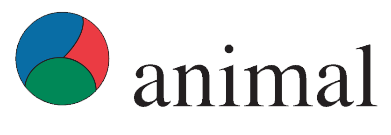Document type : Scientific review published in Animal
Authors: J. Beaujouan, D. Cromer, X. Boivin
Preview: Animal husbandry and working conditions for livestock farmers have changed significantly in recent years as agriculture has been exposed to economic as well as health, environmental and ethical challenges. The idea of interdependent welfare between humans and animals is more relevant now than ever. Here, we innovatively bridge two disciplines-ergonomics and applied ethology-to achieve an in-depth observational understanding of real husbandry practice (by farmers, inseminators, vets) at work. Ergonomics aims to gain a detailed understanding of human activity in its physical, sensitive and cognitive dimensions in relation to a task. It also aims to transform work situations through a systemic approach drawing on multiple levers for change. Here, we examine how this analysis holds up to the inclusion of animals as an integral component of the livestock farmer's work situation. Applied ethology studies behaviours in animals managed by humans. It aims to understand how these animals perceive their environment, including how they construct their relationship with the livestock farmer. This paper proposes an original conception of the human-animal relationship in animal husbandry that employs core structural concepts from both disciplines. From an ergonomic point of view, we address the human-animal relations by examining the relationship between 'prescribed' and real work practices, between work and personal life situation, between professional task and human activity. On the applied ethology side of the equation, the human-animal relationship is a process built through communication and regular interactions between two 'partners' who know each other. The goal is to understand how each partner perceives the other according to their multimodal sensory world and their cognitive and emotional capacities, and to predict the outcome of future interactions. We cross-analyse these scientific views to show, based on examples, how and in what way they can intersect to bring better analysis of these human-animal relationships. We reflect on common working hypotheses and situated observational approaches based on indicators (behaviour and animal and human welfare/health). This analysis prompts us to clarify what human-animal relational practice means in animal husbandry work, i.e. a strategy employed by the livestock farmer to work safely and efficiently in a healthy environment, where the animal is treated as a partner in the relationship. In this perspective, the challenge is for the livestock farmer's activity to co-build a positive relationship and avoid being subject to this one.






